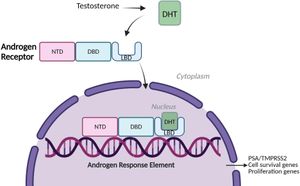NASA astronaut Suni Williams, renowned for her extensive experience, has been on the International Space Station (ISS) for seven months, but her return has been delayed due to unexpected technical problems. Williams, along with fellow astronaut Butch Wilmore, was set to return to Earth following their week-long mission scheduled for June 2024, but complications have pushed their return to late March or early April.
Last Thursday, Williams conducted her first spacewalk during this mission, marking the eighth of her illustrious career. This venture outside the ISS involved working on maintenance tasks integral to ensuring the station's operations continue smoothly. Joining her was astronaut Nick Hague, and together they tackled various important repairs: fixing equipment responsible for the station's orientation, patching light filters on the NICER X-ray telescope, and replacing components on the international docking adapter.
The entire operation lasted six hours, with NASA reporting success across the board. Williams and Hague did not shy away from notable challenges; they also prepared tools and access areas for future maintenance on the Alpha Magnetic Spectrometer, which is pivotal for particle physics experiments aboard the ISS. Their next spacewalk is scheduled for January 23, where they will assist with additional tasks, including the removal of specific radio frequency components and collecting surface samples for microorganism study.
Despite the setbacks, Williams and Wilmore continue their work on the ISS. Their initial mission aboard Boeing's Starliner, intended for eight days, has faced delays mainly due to malfunctions including helium leaks and thruster issues. NASA is now planning to facilitate their return aboard SpaceX’s vehicle, ensuring safety remains the priority. The unanticipated extension of their stay prompts reflections on how astronauts adapt and readjust post-mission, particularly after enduring the physical and psychological effects of prolonged weightlessness.
Astronauts returning to Earth experience various challenges, which are becoming more evident as space missions grow longer and increasingly complex. The human body undergoes significant changes when exposed to microgravity for extended periods, including muscle atrophy, bone density loss, and alterations to the cardiovascular system. Rehabilitation and readaptation processes are, hence, not just important but necessary elements following their return from the ISS.
Scientists have strived to understand the full extent of these changes to assist astronauts as they transition back to their Earth-bound lives. Programs involve intensive exercise regimens, physical therapy, and close monitoring to mitigate the risks associated with spaceflight. Williams and her colleagues will likely undergo these evaluations upon their return. Exercising in microgravity helps to preserve muscle and bone health, but readjusting to Earth's gravity still involves physiological and psychological challenges.
The psychological aspects can be just as demanding, as astronauts often report feelings of isolation and disorientation after returning from space. The space environment is drastically different from life on Earth, and this abrupt change can lead to experiences akin to reverse culture shock.
What’s more, the training they undergo does not fully prepare them for the realities they face once their feet touch the ground again. NASA’s research on readaptation highlights both the resilience and vulnerability of astronauts, as teams work diligently to support them during this transitional phase.
To summarize, astronauts like Suni Williams exemplify the remarkable feats of human capability and the rigorous demands of spaceflight. Yet, their journeys shed light on the important post-mission challenges they face—both physiologically and emotionally. The role of agencies like NASA and SpaceX becomes pivotal not only for the logistical aspects of returning home but also for ensuring the health and well-being of astronauts over the long term.
With safety remaining at the forefront amid technical difficulties, the future of spaceflight continues to evolve. Williams’ experience reinforces the need for scientific research focusing on how best to facilitate the return of astronauts to Earth, ensuring those who venture beyond our planet are supported not just during their missions but long after they return—when the real work of readaptation begins.



